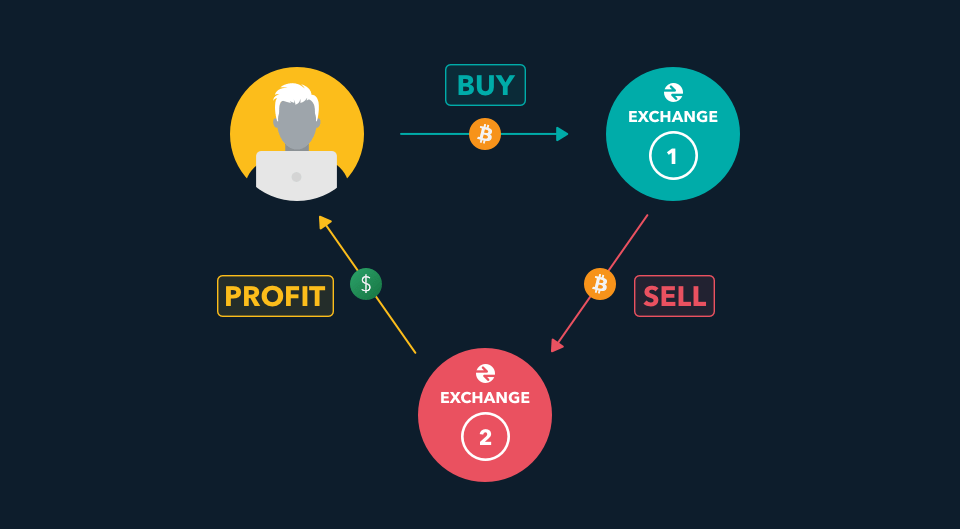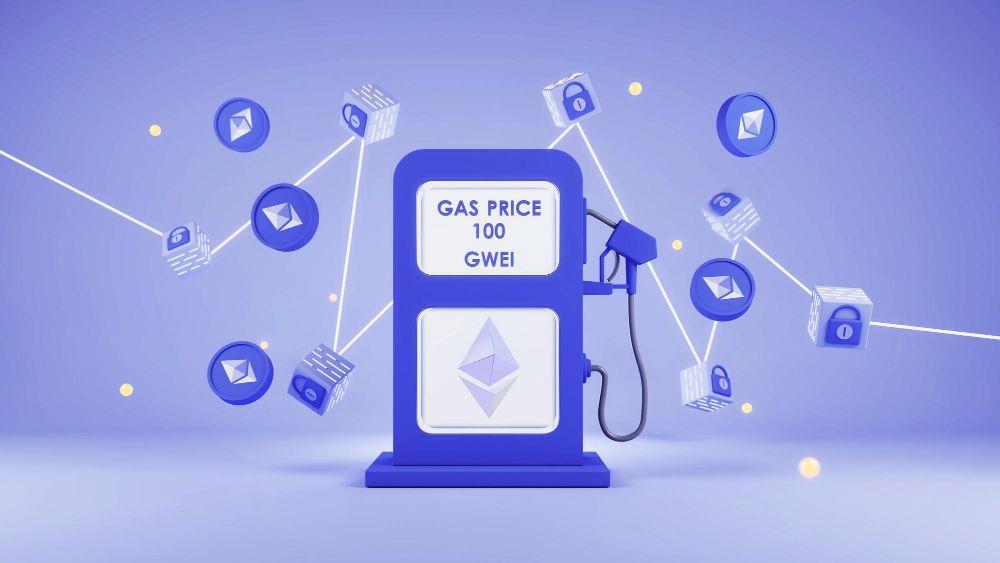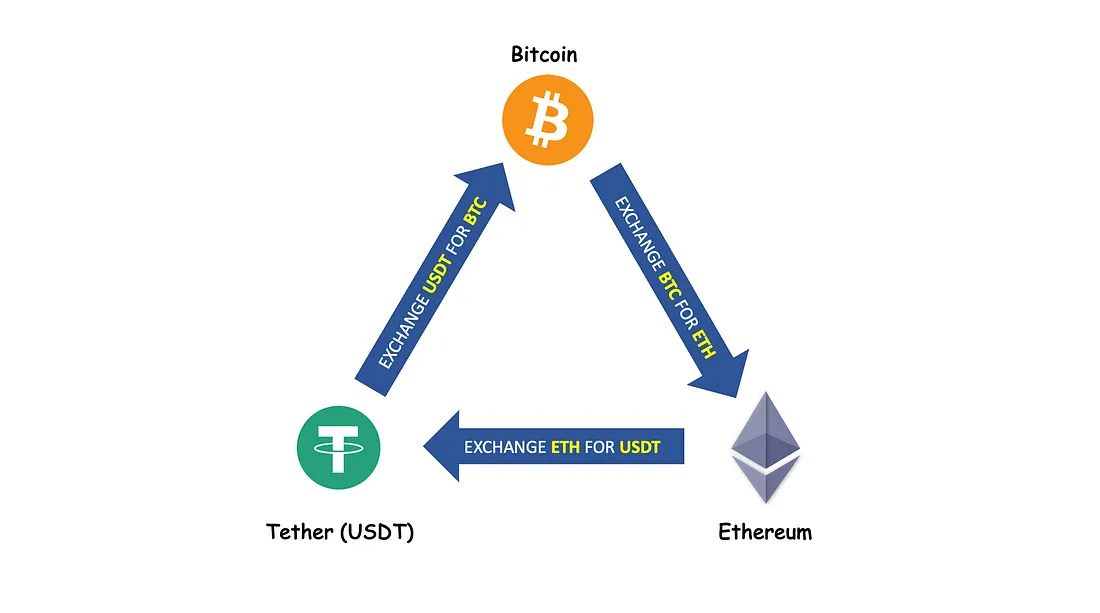Arbitrage is a familiar concept in the investing world, usually used by experienced investors. Because price differences are often temporary, making a profit from arbitrage requires a good understanding of its benefits and drawbacks, as well as a clear strategy. This guide will outline all the strategies, risks, and rewards of cryptocurrency arbitrage that you need to know.
What is cryptocurrency arbitrage?
Arbitrage is the practice of buying and selling the same asset on different markets to profit from the price differences of that asset. This can occur in any financial market, such as cryptocurrencies, stocks, commodities, and fiat currencies.
In the cryptocurrency market, arbitrage simply refers to trading assets on different exchanges to earn profits from price discrepancies. Since cryptocurrencies are listed on multiple exchanges and their prices are not fixed, this creates opportunities for traders. With cryptocurrency arbitrage, the risk is relatively low but the profit is high.

In addition to serving as a tool for traders to generate profits, arbitrage trading also acts as a bridge, helping to stabilize asset prices across different markets.
How does cryptocurrency arbitrage work?
Here is a simple example illustrating the process of arbitrage in the digital currency market.
- Trader A buys Bitcoin at 50.000 USD on exchange X.
- Then he quickly sells it on exchange Y at 52.000 USD.
- Thanks to the price difference of 2,000 USD, he earns a profit of 2.000 USD from selling Bitcoin. If we take transaction fees into account, the profit will be less than 2.000 USD.
Risks and rewards
What risks await you?
Traders should carefully assess their options and establish an effective risk management strategy to maximize opportunities and minimize losses.
Transaction fees
When implementing cryptocurrency arbitrage, traders must be aware of various fees, such as transaction fees, deposit and withdrawal fees, gas fees… Over time, these costs can accumulate and may exceed the profits earned.
You can solve this problem by selecting platforms with lower trading fees or by optimizing your trades with higher volumes, which can help reduce transaction costs.

Time discrepancy
Traders must be cautious with timing their arbitrage trades, as buying and selling need to happen simultaneously within a short period. When both individual and institutional investors participate in arbitrage, it can lead to significant price slippage.
Slippage
Slippage is another frequent challenge in cryptocurrency arbitrage. It occurs when the executed trade price differs from the price you planned to get. This can happen due to insufficient market liquidity or rapid price fluctuations caused by volatility. When slippage takes place, it can reduce your potential profits or, in some instances, eliminate them altogether.
Bot-related risks
To achieve high profits from cryptocurrency arbitrage, traders need to execute trades frequently and with precise timing, which is why professional investors often use bots. However, bot is just a tool, and you must still fine-tune it according to your personal strategy. Some traders over-rely on bots without acknowledging how fast market conditions can shift and require human judgment and adaptation.
Security
This is one of the common risks in the crypto market. You should be cautious in selecting trusted exchanges for arbitrage trading and establish protective measures for your assets.
Rewards
Enough of the risks, let’s talk about some sweet fruits you can yield from exploiting arbitrage precisely.
- Traders engaging in arbitrage do not need extensive expertise. They simply need to understand how to buy and sell assets across various markets.
- By employing an arbitrage strategy, traders can help narrow the price gap between markets, thereby enhancing market liquidity.
- Executing successful arbitrage transactions can yield significant profits for traders.
- This strategy is often considered relatively low-risk, as trades are usually completed within a short time frame and rely on existing price differences between markets.
- Cryptocurrency arbitrage also serves as a way to diversify portfolios by participating in multiple markets and leveraging the disparities among them.

Finding best strategy for you
Cryptocurrency arbitrage trading can be done in many ways. Below are some strategies for you to consider.
Spatial arbitrage
This is the simplest form of arbitrage, where you purchase cryptocurrency on one exchange at a lower price and sell it on another exchange at a higher price. It is appealing due to its straightforward nature and relatively low risk.
However, there are some drawbacks to consider, including:
- Reliance on transaction speed between exchanges.
- Potential delays that can reduce profits
- Various fees for withdrawing and depositing cryptocurrencies that may further cut into earnings.
If you’re looking for a suitable platform to enhance your arbitrage trading experience, consider iFlux. iFlux Global elevates your arbitrage trading with fixed token prices, low-interest installment plans, and advanced risk management tools, giving you a unique edge in the market.
Explore more at https://iflux.global/.
Triangular arbitrage
Triangular arbitrage capitalizes on price discrepancies among three different cryptocurrency pairs within a single exchange. For instance, starting with a currency like USDT, you can trade it for BTC, then exchange BTC for ETH, and finally convert ETH back to USDT. The goal is to end up with more USDT than you started by exploiting fluctuations in conversion rates.
One of the main advantages of this method is that it eliminates the need to transfer funds between different exchanges, thereby reducing potential delays. However, this strategy needs fast execution across multiple pairs to reduce the risk of price slippage. You should have a good grasp of market trends and currency conversion rates to succeed.

Cross-exchange arbitrage
Cross-exchange arbitrage involves exploiting price differences between futures contracts on one exchange and the spot price on another. For instance, if Bitcoin’s spot price is 30.000 USD on exchange A and the futures price is 30.200 USD on exchange B, a trader can buy Bitcoin at the lower spot price and sell the futures contract at the higher price.
While offering significant returns when spot and futures prices diverge, it requires knowledge of both markets and involves using margin and leverage, which increases risk.
Latency arbitrage
This form of cryptocurrency arbitrage utilizes the delays in price updates between different exchanges. When one exchange updates its prices more slowly than another, traders can take advantage of this by buying an asset on the slower exchange before its price adjusts.
Latency arbitrage yields frequent opportunities without needing to transfer funds between exchanges, as it relies on quick trades. However, it requires extremely fast execution and low-latency connections, as prices can change before trades are completed.
To sum up:
- Spatial arbitrage is suitable for beginners as it requires little technical knowledge and basic tools.
- Triangular arbitrage is better suited for advanced traders with a strong grasp of market dynamics and mathematical concepts.
- Latency arbitrage and cross-exchange arbitrage are much more complex, demand specialized tools. Therefore, it should only be considered by tech-savvy traders.
Cryptocurrency arbitrage is an effective way to earn profits and take advantage of market inefficiencies. With the assistance of automatic tools like bots, you can elevate your outcome significantly. But the most crucial factor is to continually improve your knowledge and skills to better navigate the market.
Visit iFlux to read and learn more about getting started with cryptocurrency investment.




